A customer statement summarizes the position of your customer. By itself, it does not create any obligation for the customer to pay you. That is the purpose of sales invoices. In fact, a customer statement has no direct impact on anything financial. Although some businesses use customer statements for billing, they are really more informational in nature. They can be used for several reasons, including:
| • | Sending reminders of amounts owed |
| • | Listing opening balances, receipts, new charges, and closing balances during a billing period |
| • | Summarizing aging of Accounts receivable (how long overdue payments might be) |
| • | Answering customers' questions |
| • | Troubleshooting account disputes |
| • | Reviewing customer history |
Creating customer statements
Customer statements are created in the Reports tab under Accounts receivable. The reports in this group become available automatically when you activate the Customers tab. Click on Customer Statements.
 =>
=> 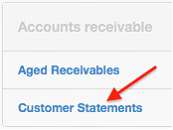
MYBOS can generate two types of customer statements, selectable in a dropdown box.
Unpaid invoices statements
The "Unpaid invoices" option produces a classical customer statement based on sales invoices that have not been completely paid. The default "Until" date is the current date, but others can be entered.
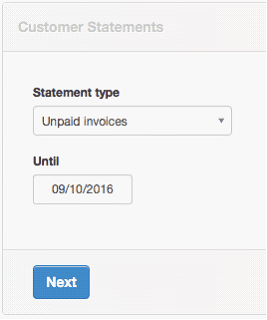
Click Next to see a list of customers who owe you money. The list shows numbers of unpaid invoices and Accounts receivable balances:
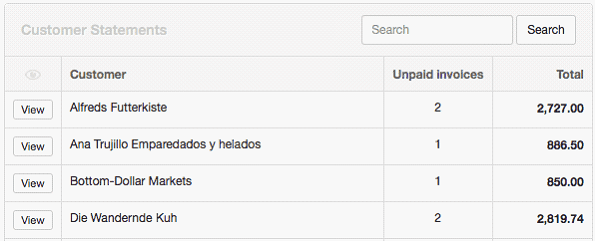
Click View to see a specific customer's statement, which can be printed or emailed:
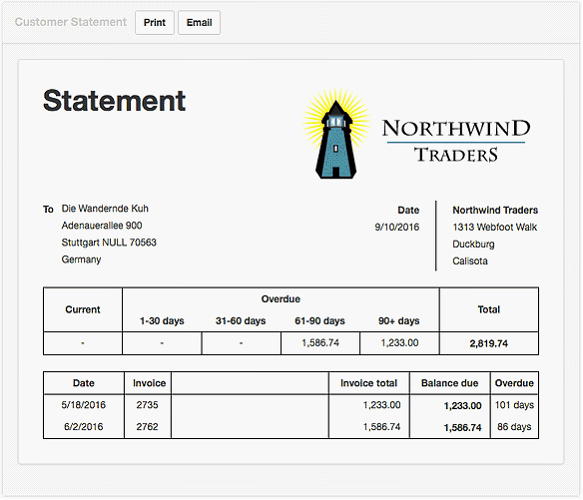
Transactions statements
The "Transactions" option brings the opportunity to specify both "From" and "Until" dates.

Again, clicking Next shows a list of available statements. Only those customers with transactions during the specified period will show. Click View to see the desired customer statement:
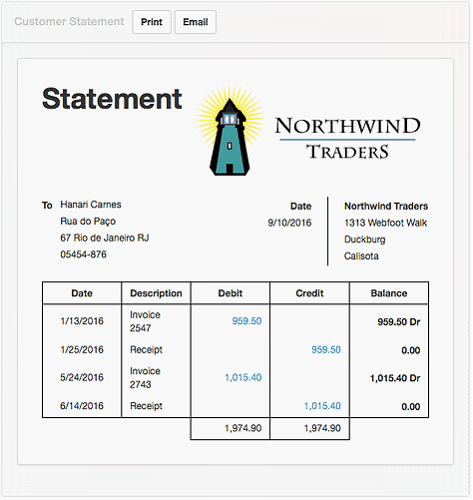
This format lists transactions as debits and credits from the customer's perspective. Thus, invoices are shown as debits and receipts as credits, opposite from their categorization in your own accounts. Running balances are also shown.